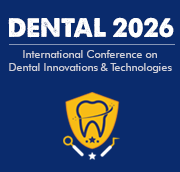Pain Management and Anesthesia in Dentistry
Pain management and anesthesia are critical components of modern dental care, ensuring patient comfort during various dental procedures. In dentistry, local anesthesia is the most commonly used method, effectively numbing a specific area to prevent discomfort during treatments like fillings, extractions, and root canals. The most common anesthetic used is lidocaine, which works by blocking nerve signals to the brain, providing temporary relief. For patients with severe anxiety or fear of dental procedures, sedation techniques such as nitrous oxide (laughing gas) or oral sedatives are often employed. These methods not only ease physical discomfort but also help calm nerves, promoting a smoother dental experience. Pain management is an essential part of maintaining optimal oral health, enabling patients to undergo necessary treatments with minimal distress.

David Geoffrey Gillam
Queen Mary University of London, United Kingdom
Zvi Loewy
New York Medical College, United States
Khamis A Hassan
Global Dental Research Centre, Canada
Laurindo Moacir Sassi
Erasto Gaertner Hospital Cancer Center and Mackenzie Evangelical University Hospital, Brazil
Arnaldo Castellucci
Dr. Castellucci MD, DDS, Italy
Yasser Khaled
Marquette University, United States



Title : Efficacy of a biomin F toothpaste compared to conventional toothpastes in remineralisation and dentine hypersensitivity: An overview
David Geoffrey Gillam, Queen Mary University of London, United Kingdom
Title : Importance of clinical pharmacokinetics of medications in the postoperative period of patients undergoing dental surgical procedures
Vitoldo Antonio Kozlowski Junior, Ponta Grossa State University, Brazil
Title : Dealing with peri implantitis: An insight to various treatment regimens
Preetinder Singh, Academy of Oral Surgery, United States
Title : Knowledge and attitudes of dental professionals in the evaluation of Molar Incisor Hypomineralisation (MIH): Awareness, diagnosis and treatment approaches: An overview
David Geoffrey Gillam, Queen Mary University of London, United Kingdom
Title : Single root molars prevalence and its significance in human dental evolution
Uri Zilberman, Ben-Gurion University of the Negev, Israel
Title : Enhancing root canal success strategic use of orifice opener one step synthesis gels orifice barriers
Emmanuel Samson, Consultant Total Dental Care, India